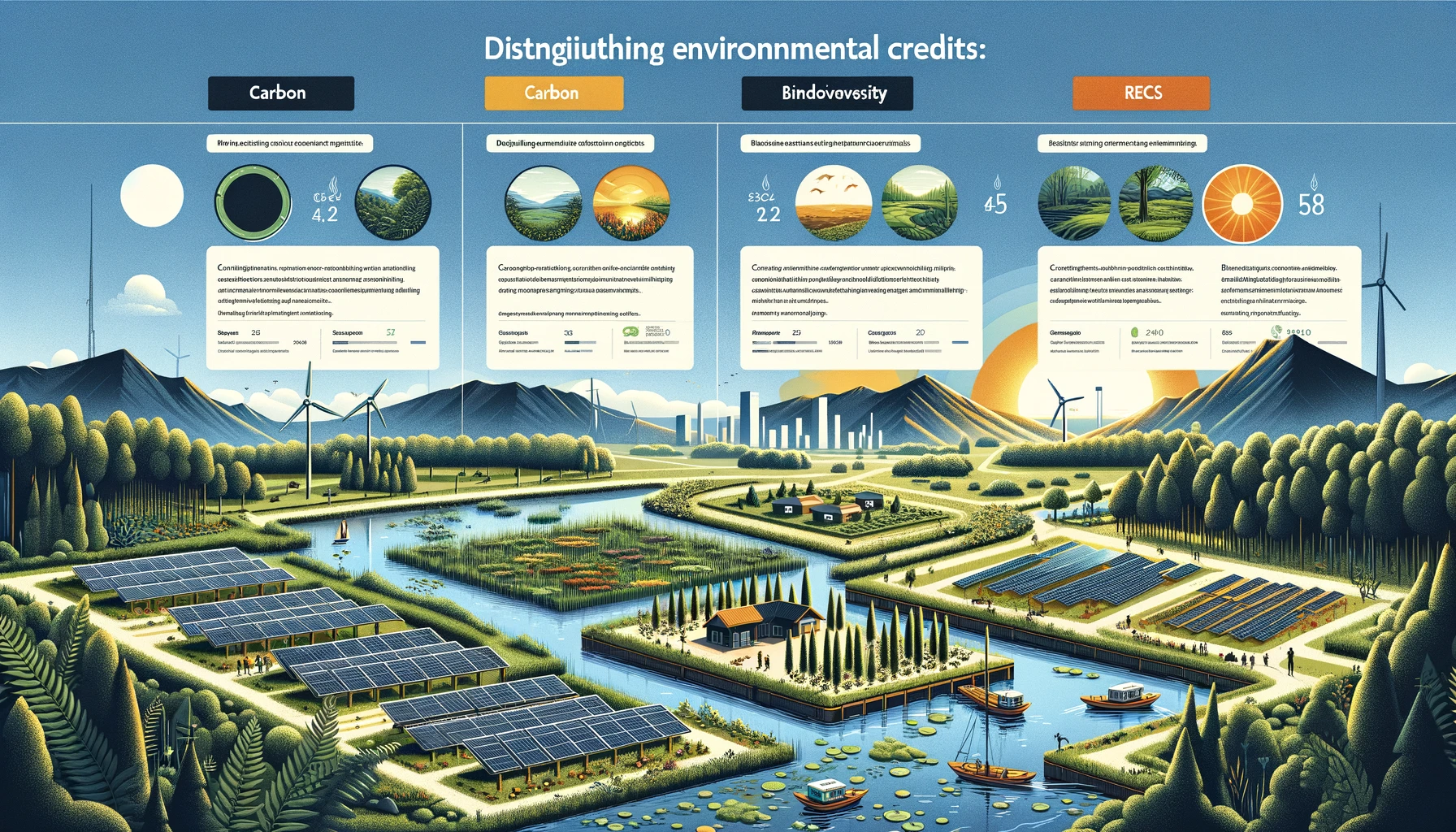
Navigating the Spectrum: Types of Environmental Credits and Their Strategic Roles
Environmental credits serve as a versatile tool in the realm of corporate sustainability, each type offering unique benefits and opportunities for contributing to science-based targets (SBTi). This page delves into the main types of environmental credits—carbon, biodiversity, and renewable energy certificates (RECs)—and elucidates their distinct roles in fostering a sustainable future.
Carbon Credits
- Overview: Carbon credits represent one tonne of carbon dioxide (or equivalent gases) reduced or removed from the atmosphere, through projects like reforestation or renewable energy.
- SBTi Strategy Role: Directly contributes to a company’s carbon neutrality goals by offsetting unavoidable emissions.
Biodiversity Credits
- Overview: Biodiversity credits finance efforts to protect, restore, and enhance biodiversity in specific ecosystems, translating ecological improvements into quantifiable units.
- SBTi Strategy Role: Supports companies in demonstrating their commitment to biodiversity and ecosystem services, complementing carbon reduction targets.
Renewable Energy Certificates (RECs)
- Overview: RECs certify the generation of one megawatt-hour of electricity from renewable energy sources, allowing companies to claim the environmental attributes of green power.
- SBTi Strategy Role: Facilitates indirect support for renewable energy projects, reducing Scope 2 emissions associated with electricity use.
Visual Enhancements
- Comparison Table: “Distinguishing Environmental Credits: Carbon, Biodiversity, RECs,” highlighting key features, benefits, and strategic implications of each credit type.
- Real Project Examples: Showcasing successful projects for each type of credit, demonstrating their impact on emissions reduction, biodiversity conservation, and renewable energy generation.
Interactive Element
- Interactive Explorer: “Match Your Sustainability Goals with Environmental Credits,” a tool that guides users through selecting the most appropriate type of credits based on their specific SBTi-aligned strategies and sustainability objectives.
Key Takeaway
The diversity of environmental credits provides a flexible toolkit for companies to strategically advance their sustainability agendas. Whether targeting carbon neutrality, biodiversity conservation, or supporting renewable energy, understanding and utilizing the right mix of environmental credits is crucial for achieving comprehensive science-based targets.
Conclusion
Environmental credits offer a pathway to not only meet but also amplify the impact of science-based targets across the spectrum of sustainability challenges. By exploring the roles of carbon, biodiversity, and renewable energy certificates, companies can craft nuanced, impactful strategies that align with their commitment to a sustainable future.